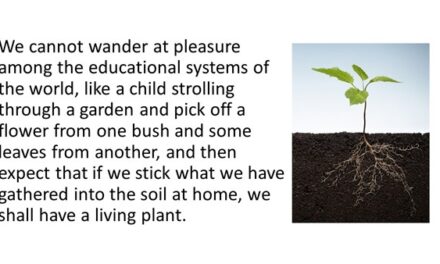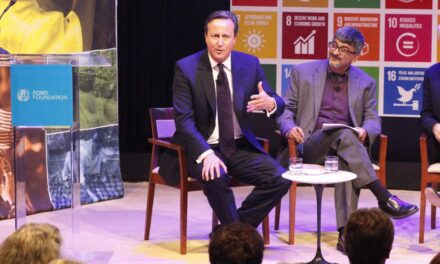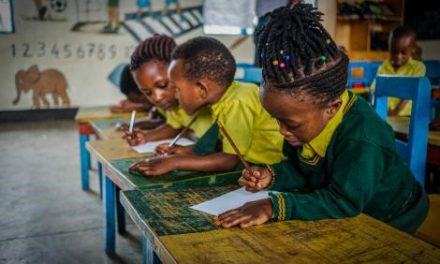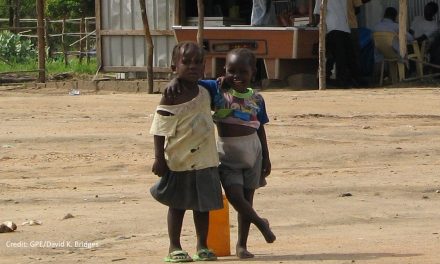This blog was written by Alison Buckler, The Open University and BAICE Vice Chair. It was originally published on the BAICE website on 21 May 2021.
As the Compare journal approached its 50th anniversary, a study was commissioned to celebrate the milestone. A competitive tender for authorship was launched with the brief that the study should capture a sense of what Compare had come from, where it was now, and how it might develop in the future.
The commission was awarded to an international team, based in the US. The panel was impressed by the multidimensional methodology and appreciated the team’s commitment to working with junior scholars (including an explicit plan to appropriately reimburse and accredit their contribution). The study took place during 2020 and adopted a time-series analysis of Compare issues dating back to its first issue in a modern journal format in 1975, with a three-prong analysis approach including descriptive (to provide an overview of key features of Compare’s publication history), spectral (to examine trends and cycles within the overarching data set) and explanative (to situate the journal’s activities in the wider field of comparative and international education). A further thematic analysis of editorials was undertaken to trace ‘understandings of key conceptual pillars throughout the journal’s history’ (p.11). The resulting report is comprehensive and provides a broad and detailed data set around different dimensions of Compare’s history.
It is poignant that Compare’s juncture of a half century and subsequent opportunity for contemplation of past, present and future came in a year in which academics were forced to pause and reflect on so many other levels: the uncertainties of Brexit and its implications for travel, funding and collaboration; the industrial action that saw us standing in sleeting rain asking people to re-think the shape of higher education; the increased attention on Black Lives Matter and anti-colonial movements that galvanised difficult questions on complexity and complicity around the preservation of the status quo in education and development agendas and in our institutions; and the Covid-19 pandemic, limiting our opportunities to connect and learn, but also forcing us to think about new ways that connecting and learning could be possible.
As the incoming Vice Chair of the British Association for International and Comparative Education (BAICE) – with which Compare is affiliated – I intended to write a summary of the report for the new BAICE blog. This seemed a fairly straightforward plan until, as the year progressed, it became impossible to reflect on a report about the state of comparative and international education in 2020 without reflecting on it through the lens of 2020 itself. In this post, therefore, I present three interconnected reflections and some suggestions that the journal could take forward.
***
The first reflection is around where Compare stands, and what it stands for. The report summarises key stages and debates in the history of comparative and international education (CIE), including a consideration of the benefits of its ‘amorphous’ nature (p.4) in terms of welcoming epistemic diversity and interdisciplinarity, balanced against the risk of lack of coherence due to the absence of a standard, universally agreed-upon definition. Within this complex landscape the authors position Compare’s own ‘distinctive identity’ (p.4) connecting the fields of comparative education and education for international development. They highlight the opportunities for Compare enabled by the inclusivity of this bridging position, as well as the frustrations of not being explicitly able to distinguish itself from either field. In recent years the expansion of research within CIE with a foot solidly in the ‘development’ camp seems evident, although the report’s data on title keywords suggests that in Compare there has actually been a drop off: development was in the top five words in the 1980s, 1990s and peaking in the 2000s, but did not even appear in the top ten in the 2010s (p.26-27). The drop-off could signify the growing critique of ‘development’ and contributors’ reluctance to visibly associate with it in the title of their piece rather than an actual reduction in articles focussed on development issues. I also wondered if terms such as ‘professional development’ or ‘teacher development’ bumped development misleadingly up the charts during the peak.
The authors also provide a thought-provoking parallel history of Compare and the broader history of CIE. As would be expected – given the occasion of the 50th anniversary – they begin the narrative with the ‘CIE for self-improvement’ phase of the late 1960s, i.e. people travelled to other places to observe education systems with the intention of bringing back ideas for how they could improve their own. The authors position the contemporary field as a phase of ‘contextualisation of CIE’ – a desire to understand the educational world better through comparison. This sounds plausible but also, perhaps, a somewhat sanitised version of the field’s trajectory. Given the increasing overlap between CIE and development studies and the report’s data that shows how academics affiliated with institutions in high income countries still dominate the lead author spot (76 percent in the 2010s), while nearly half of articles (46.5 percent) have a lower income country as its focus, the shift could perhaps be seen differently: in the 1960s people studied education systems in other countries for self-improvement, a contemporary intention for many people studying education systems in other countries is improving them.
One way of addressing this imbalance is to diversify the authorship to ensure a greater balance between country focus and author affiliation. Compare has a long-standing commitment to this, as we’ll see in the next section. I would suggest an additional and more radical step would be to fund studies and call for articles that invert the lens: where authors from institutions in lower income countries research and write about education systems in high income countries. As far as I can see from the data in the report, this is an almost invisible dynamic across Compare’s history.
***
The second reflection is around Compare’s long history of seeking diversity in both contributors and readership. The report suggests that while Compare has always embraced its capacity to appeal to diverse audiences, it was in the 1990s that editors began to explicitly capitalise on this potential for diverse ways of knowing. This was articulated through pushes to include a wider range of methodological, theoretical and conceptual approaches, a wider range of countries as the focus of research, and the inclusion of voices that had been ‘historically neglected from academic publishing’ (p.31). Moves included the promotion of research conducted by non-academics and the introduction of the Compare Forum: an ‘‘innovative practice to include additional perspectives’ (p.11). The addition of PhD dissertation summaries was a way of diversifying outputs, engaging and showcasing the field’s future professionals, and ensuring more inclusive and supportive reviewing for this cohort.
The report captures some of this diversity through the data generated around the more than 1000 Compare articles published since 1975 – although this comprehensive coding exercise did not include PhD extracts or Forum pieces; the inclusion of which were at the heart of Compare’s explicit showcasing of the breadth and inclusiveness of CIE.
Through my involvement with Compare, the commitment of the current Editors to reframe the journal’s identity in ways that are less visibly captured in statistics is clear: diversifying authorship does not necessarily address epistemic dominance. Making space for new ideas is as important as ensuring a range of contributors. It will be a key responsibility of the new Editors to continue and expand these efforts to shift the balance of educational thinking. An interesting area to explore in this respect could be the encouragement of articles that compare places in high income and lower income countries: only four percent of articles across Compare’s entire publication history have done this. Thinking about how this could be done in a way that does not assert a ‘western’ approach to understanding global education dynamics, but also does not entrench a polarisation of epistemology (these ideas for these countries / these other ideas for these other countries) seems to be an important way forward for the field.
***
My final reflection is around how the data in the report (perhaps unintentionally) demonstrates the increasing pace and panic of academia, and the impact of this on workload and work-type. It does this in several ways. First it illustrates the rapid growth of Compare since the 1970s. For its first two decades Compare published two issues a year. In the 1990s a third issue was added. By 2020 the journal was publishing eight issues a year. In terms of individual outputs, this represents an increase from 63 to 428 articles per decade (p.17). I know from my ‘behind the scenes’ work with the journal that this only represents a fraction of articles received. Of course, this is a positive reflection on the growth of CIE and the huge numbers of interesting and high-quality research being submitted. But when combined with other metrics and observations a slightly different picture emerges.
For example, the report shows that, for the first three decades of Compare’s history, review articles (or ‘think pieces’) counted for more than half of its publications, with nearly 90 percent of articles published in the 1990s falling within this category. In the 2010s, the last decade of the study, review articles constituted just over 20 percent. The authors attribute this to the increasing scientisation of the field, but I would suggest this could go one step further and be linked partly to the pressures of the REF for UK-based academics (it is easier to explicitly demonstrate 3* rigour and originality with an empirical piece than a think-piece), and partly to the increased expectation that academics also blog (a ‘micro’ think piece takes less time to write and can receive much more global and immediate traction than a longer piece locked away behind a paywall).
Finally, as the report outlines, issues of Compare no longer include ‘commentary and reflective’ editorial pieces (p.35). The authors do not go into the reasons for this, although it would be reasonable to assume that writing eight editorials per year would be unfeasible, and it frees up space for more articles. But together, these shifts in the journal’s scale and outputs track and illustrate academia’s increasing demand for constant, rapid production, quite likely at the expense of opportunities for deeper, slower critique and contemplation. So, my final challenge to the Editors is to consider what Compare could do, as it enters its second half century, to reclaim these opportunities as a push-back to the intense pressures of higher education and pay tribute to the contemplative focus of its original issues.





